|
|
Post by Deleted on Sept 19, 2019 23:56:34 GMT -5
|
|
|
|
Post by codystarbuck on Sept 21, 2019 19:15:12 GMT -5
In the 1960s, on of the chief literary rivals to Fleming's Bond (and many would say superior, stylistically) were the series of novels by Donald Hamilton, featuring counter-intelligence agent Matt Helm. Helm was a top assassin and agent during the war; but is living the quiet life, with a wife and baby daughter. He is reactivated and his daughter is kidnapped. From there, he has to rejuvenate his skills and by the end of Death of a Citizen, he is a killing machine. The Matt Helm novels were serious, realistic affairs. So, when they were optioned for a film series, who was the perfect person to play the cold blooded Helm>  Yup; Dino Crocetti, aka Dean Martin. Martin's company was involved in producing the films; and despite a rather serious original story (with elements from Death of a Citizen and The Silencer), the director and Martin tuned it into pure spoof, though with plenty of action. The series begins with The Silencers.... Matt Helm is retired, working as a pin-up photographer, with his secretary, Lovey Kravezit. His old boss MacDonald comes to recruit him to stop a plot by Big O, an international criminal group, led by Tung=Tze. They plan to set of WW3 by diverting a missile into an atomic bomb test site. Matt and a fellow ICE (Intelligence and Counter Espionage) agent, Tina, are sent to the Southwest to meet up with a contact, who has information about the plot. Along the way, they run into Gail hendricks, a klutz who gets mixed up in things, Sam Gunther, a Big O operative and a whole lot of trouble. Matt ends up teaming with Gail and they locate Big O's underground fortress, and a double agent. Matt gets free; and, with Gail's bumbling assistance, unleashes havoc on Big O. The film starts Martin, Stella Stevens, Dallah Lavi, Victor Buono, Arthur O'Connor and James Gregory, as MacDonald. The film is complete silliness, yet is engaging fun, with a terrific jazzy score, a couple of numbers from Dino, a couple from Vicky Carr, Cyd Charisse dancing, and Stella Stevens stumbling all over thing and ending up in her lingerie, when convenient. Matt's spy gadgets are more ludicrous than anything Roger Moore had. He gets a pistol that fires backward, when you pull the trigger and fires forward when you push it. Then, he gets snap off buttons that are actually hand grenades, so he parades around in a sport coat with gigantic buttons in odd places. Instead of a stylish sports car, he gets a station wagon, equipped with a bar and a fold down bed. This, by far the best off all of the Matt Helm films and it is both funny and exciting, with a great climax that features a running battle, through Big O's underground fortress. Austin Powers would later borrow elements of it, including the golf carts to move around the underground facility. Murderer's Row is the second film. Matt appears to be killed at the start, when he is dumped into an electrified pool. Big O has been carrying out an assassination program, targeting the world's top agents. however, att's death was faked to through Big O off the scent and let Matt track them down. Matt travels t the French Riviera, as Chicago hitman Jim Peters, trying to locate Dr Solaris, creator of a death ray which will be used against Washington DC. He finds Solaris' daughter Suzie, and helps her escape an assassination attempt. He must deal with mastermind Julian Wall, his mistress Coco Duquette, and a thug, with a metal plate on his head, named Ironhead. Together, he and Suzie infiltrate Wall's private island and find her father, with a climactic fight on a hovercraft. Agai, we have a great cast, with Martin and James Gregory back, joined by Karl Malden as Wall, Ann Margaret as Suzie, Camilla Sparv as Coco and Tom Reese as Ironhead. We also get a cameo by the band Dino, Desi and Billy, featuring Dean Paul Martin, Desi Arnaz Jr, and Billy Hince. They are the band plying in a discoteque and, at one point, Dean Paul calls Dino, "Dad," which gets a horrified reaction from Matt Helm. There are running gags about alcohol and people turning radio stations to Sinatra music and Martin turning them to his own music. This time, he gets a gun that fires a freezing spray, a pistol with a time delay, after the trigger is pulled, and more gadgets in his car. We get a full size ferry hovercraft and a sporty smaller one, for the big sea chase, in the climax. This one is't quite as lively as The Silencers; but, is still pretty exciting and fun. Matt Helm is recruited by macDonald to talk to Sheila Sommers, an agent and pilot of an experimental flying saucer, which disappeared ina Central American jungle. Sommers has amnesia; but, her memory is partially restored upon seeing Matt. They go to Mexico to locate the saucer, which is in the hands of Jose Ortega, deposed ruler of an unnamed nation. he intends to use it to seize power. The third in the Matt Helm series is rather weak and disjointed and is generally considered to be the worst of the series. The villain uses and magnetic ray to strip a woman and he has a female assassin, played by Senta Berger. Albert Salmis is the villain and Jean Rule is Sheila. The film has moments and the climax, on a speeding train, inside the saucer and a railcar, is pretty good; but there are some really slow moments in the film, especially the early stages and parts of the second act. Much of the playfullness of the first two films is lost and the jokes miss more here, than hit. The fourth and final Matt Helm film is The Wrecking Crew. A trainload of gold is stolen by a criminal mastermind and Matt Helm is sent to track it down and recover it. Along the way he works with Sharon tate, while meeting Nancy Kwan, Elke Sommer and Tina Louise. The villain, Nigel Green, has a group of dangerous thugs and Matt employs some martial arts skills. Action rages across Denmark ind climaxes on a train speeding to Luxembourg. This was more of a return to form, though not quite as fun as The Silencers. The gold theft flot os a refreshing change and Green makes for a great villain. The femme fatales are great fun and Tate gets to play around a bit, as a bumbling British agent, disguised as a anish tour guide. Tate got good reviews and Dino wanted to do another Matt Helm flm, with Tate returning as her character. Sadly, within the year she would be murdered by the Manson Family, while pregnant with husband Roman Polanski's child. The film has some great action scenes, particularly the early gold heist and the climactic fight on a train. Martial arts were a major component and Bruce Lee choreographed some of the fight scenes and trained the actors, including Tate, in techniques. Chuck norris has a minor role as one of the thugs, and has to take a dive for Dino. Stuntmen included Wilhelm von Homburg, a pro wrestler and boxer (and Vigo, in Ghostbusters 2), Norris, Pepper Martin (a noted pr wrestler in San Francisco and Los Angeles, and karate experts Joe Lewis and Ed Parker Jr. A fifth film, The Ravagers, was announced at the end of The Wrecking Crew; but, Dean Martin bowed out, after Tate's murder. As a result, Columbia held up Martin's profits from Murderer's Row. They eventually settled and that was the end of the series. Later, in 1975 a tv series was launched, with Tony Franciosa, as Matt Helm. It lasted 14 episodes (including pilot). In the series, Helm is retired from the spy game and is a private detective and plots were standard PI fare. It was not popular and ended shortly. Lynda Carter had one of her earliest pre-Wonder Woman roles in the episod, "Panic." The Matt Helm series was popular, in its day and a favorite on tv movie packages, which is how I saw them. They became a staple on WTBS, in the mid-80s, along with the Planet of the Apes films and other 60s adventure movies and comedies. They aren't to be taken seriously; but, they have plenty of action to rival the Bond films, if not quite the budgets or stunt performers. Martin plays up his image, his rivalry with Sinatra and the gadgets ar satires of the kinds of things Bond used. The series was a big influence on the Austin Powers series, with it's jokey take and his photographer cover profession. These films and the derek Flint movies are the pinnacle of the spy spoofs that followed Bond. They have enough action and laughs to satisfy any audience and were great box office, in their day. Next, back to tv, as Ian Fleming helps with the birth of another tv series, which would give rise to a spy comic at Marvel, while proving popular enough to have episodes edited together as feature films, spawn a reunion movie and a modern era remake. Come back as we open Channel-D and meet The Man From UNCLE. |
|
|
|
Post by Deleted on Sept 21, 2019 20:23:38 GMT -5
I'm a big Matt Helm Fan and I have all the DVD's associated with this Four Films that Dean Martin did; my favorite film is the Murderer's Row; then the Silencer's followed by both the Wrecking Crew and the Ambushers. The train and the Gold Heist was good and the acting of Sharon Tate took a new low of a "dumb girl" until she puts on that brunette wig. I like Ambushers because of Janice Rule and Senta Berger; Row was a smash because of Ann Margret and Silencer's packed a one two punch of Stella Stevens and Daliah Lavi. I enjoyed them all for what they worth; and they did not fail to entertain me.
My favorite villain was Vincent Bruno in the Silencers
My favorite villainess was Camilla Sparv as Coco in Murderers Row.
Excellent recap here.
|
|
|
|
Post by codystarbuck on Sept 22, 2019 20:38:36 GMT -5
So, have your friends disappeared on a cruise? Run into scuba divers in the middle of Iowa? Escorting teenage students through Europe and run into spies? Just cry "UNCLE!" 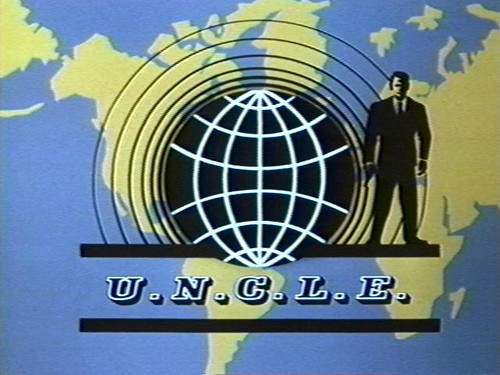 The Man From UNCLE was created by Sam Rolfe and Norman Felton and premiered on NBC, in 1964. Felton also recruited Ian Fleming to add his thoughts to a spy series, with Fleming's main contributions being the names Napoleon Solo and April Dancer. The concept of the series was that agent Napoleon Solo would investigate strange events or carry out secret missions, usually involving a civilian, whose help was needed, in some fashion. It was decided early on that the organization that Solo worked for would be international. However, since the UN forbids the use of its name with commercial ventures, UNCLE was given the full name of the United Network Command for Law and Enforcement, though articles often mistakenly said United Nations, etc, etc. Rather than make the series about East vs West, UNCLE's chief foe was THRUSH, an international conspiracy that was working to become a world power in its own right. The name THRUSH was given no meaning in the series; but, the fourth UNCLE tie-in novel, The Dagger Affair (by David McDaniel) gave it one: The Technological Hierarchy for the Removal of Undesirables and the Subjugation of Humanity. McDaniel also gave them an origin. Col Sebastian Moran, after the death of prof. Moriarty, at Reichenbach Falls, created the organization, which grew into its present form. Originally, the enemy group was to be called WASP and this name was used in the pilot movie (To Trap A Spy), released to theater around the globe, then re-edited for a one-hour timeslot on tv. In the tv version, the group is called THRUSH, while the film footage uses the name, WASP. WASP was shot down because the Gerry Anderson series Stingray featured an organization called WASP. There were some other changes that came along between the movie version and the tv show. Originally, the Head of UNCLE was played by Will Kuluva, while David McCallum had a small role as Russian UNCLE agent Illya Kuryakin. An NBC exec (purported to be Grant Tinker), hated McCallum and wanted him removed; but, couldn't remember the name, just that it began with a K. Norman Felton asked if he meant Kuluva, since he was disappointed in his performance, as the boss and wanted to remove him. The exec said yes and Kuluva was released and replaced with Leo G Carroll. When the exec asked who was playing the part now, he was told Carroll and remarked he was too old for the agent. FGelton then understood he had meant McCallum, as Kuryakin and informed him that they had already signed contracts with him for the series and it would cost them to remove him, so it was let go. McCallum proved very popular with fans and was very quickly made a co-star of the series, with an equal presence in stories (early stories mostly feature Robert Vaughn and the guest star). The basic set-up for UNCLE, their headquarters, and the people was detailed in an opening segment, each week, during the first season.... Each week, Napoleon and llya would be sent off on a mission, which would either bring them in contact with a civilian or they would recruit that person for help. In the pilot episode ("The Vulcan Affair"), Solo recruits Patricia Crowley, a housewife, to get close to an industrialist and THRUSH executive, Andrew Vulcan, who had known and romanced the woman, in college. Another, "The Finny Foot Affair," has a young Kurt Russell meet Napoleon Solon and try to set him up with his widowed mother, but gets entangled in Solo's mission. This being a spy series, gadgets abound, though they are kept well within the realm of possibility (usually, though some of the episode McGuffins were more far-fetched). Communication devices were originally concealed in cigarette packs and cases, before switching to fountain pens, which would have an antenna extended and the agent would utter the phrase, "Open Channel D."  Various other devices would come and go, based on the needs of the plot; but, there was one constant, as popular as the stars: The UNCLE Special... 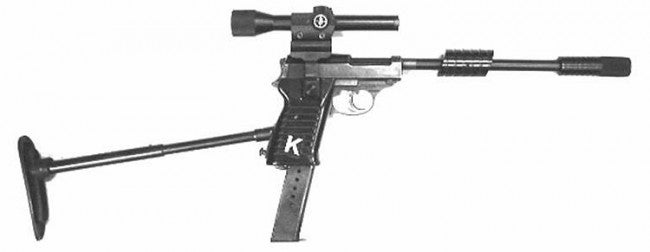  In The Vulcan Affair, Solo has a Luger and a Colt M1911; but, for the Iowa Scuba Affair, he has a Mauser, with the extended barrel, scope and shoulder stock... 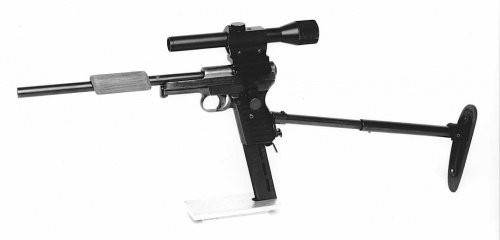 The prop gun had a problem of jamming when firing blanks, so it was replaced by a Walther P-38, which was a favorite of spy series and movies, throughout the 60s. The prop makers took a standard P-38 and added a flash suppressor, at the end of the barrel, to give it the basic look. In the series, the suppressor quiets the weapon's report, though not to the level of a silencer (or more correctly, noise suppressor). For special missions, the agents would add a barrel extension, with silencer, a telescopic sight, and a shoulder stock and extended magazine. This gave the weapon greater range, near silent firing and automatic fire. the latter depiction got the tv crew a visit from the BATF, who investigated whether the prop men made illegal machine guns. They were shown the props guns and then the footage, where squibs and sound effects added the automatic effect. The weapon was used regularly in the series and became a favorite look for spy series, films and comics from all over (especially Japan, where copies can be seen in the Speed Racer cartoon series, spy movies, the tv show Mighty Jack and others). It even spawned the Megatron toy from the Transformers line... 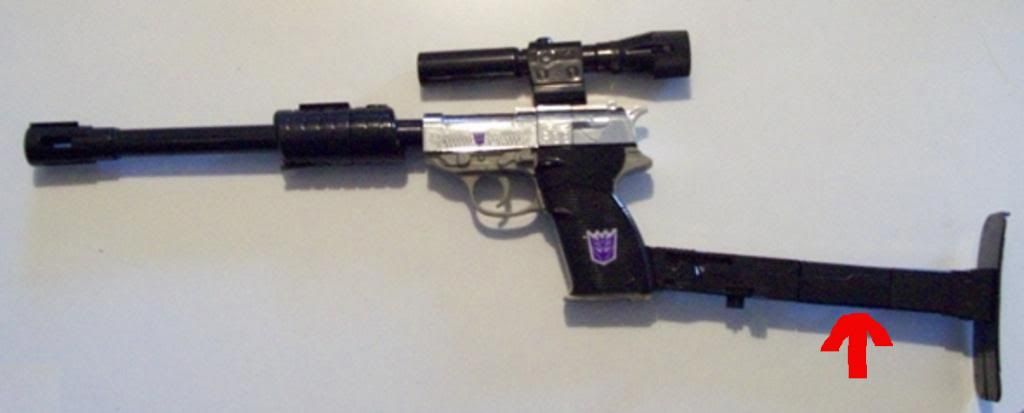 When the series became a hit, a toy gun was one of the first merchandise tie-ins...  Not to be outdone, THRUSH agents were shown to have special weapons of their own...  This was an M-1 carbine, with a foregrip added, a flash suppressor, and an infrared night scope added. The sope was an actual device, used during the Korean War, which used infrared light to illuminate an area, which could be seen through the scope. It was bulky and required a lot of power and was later replaced by the Starlite scope, which amplified ambient light for night vision (a passive sight). The M-1 was used regularly in film and tv as there were tons of surplus ones to be had (they can be seen in the planet of the apes film and tv series, with a bit of doctoring to the stock). The first season was mostly played straight and has the best episodes, with guest stars like Jill Ireland, Robert Culp, Ricardo Montalban, Carroll O'Connor, Ann Francis, and more. "The Project Strigas Affair" features William Shatner and Leonard Nimoy, before Star Trek. Shatner is the civilian recruited to help, while Nimoy is a foreign intelligence officer, working in an embassy. Barbara Feldon appears in "The Never-Never Affair," before she would play Agent 99, in Get Smart. Season 2 was the first broadcast in color and the tone was lightened up. Season 3 was even campier, as they chased the success of th Batman tv series. However, this backfired and ratings dropped. The 4th season went back to a more serious tone; but, the bloom was off the rose and the series was cancelled. However, across the first two seasons and into the third, it was a massively popular show. Episodes were edited together to create further feature films, including: To Trap a Spy The Spy With My Face One Spy Too Many One of Our Spies is Missing The Spy in the Green Hat The Karate Killers The Helicopter Spies How to Steal the World There was also a spin-off series. In Season 2 f TMFU, "The Moonglow Affair," we meet UNCLE Agents April Dancer and Mark Slate, played by Mary Ann Mobley and Norman Fell. The characters would be featured in The Girl From UNCLE, but with Stephanie Powers as April, and Noel Harrison, as Mark.   April is a younger, less experienced agent, paired with the more senior Slate. Leo G Carroll appeared as Mr Waverly and Robert Vaughn guested, as Solo, in one episode. Sadly, April Dancer wasn't allowed to be a butt-kicking spy, ala Emma peel of detective Honey West and spent most of her time being rescued or using gadgets. more emphasis was made on her Mod wardrobe than making her a strong character. As a esult, the series lasted only the one season, despite the crossover attempts. The Man From UNCLE was canceled in 1968 and that seemed to be it. However, in the early 80s, word came down of a potential movie version. MGM was attempting to revive it, as a possible rival for James Bond. At one point, Starlog reported on a movie in development, with talk of Cloris Leachman as a new female head of UNCLE. Nothing much came of this until 1983, when a reunion tv movie was broadcast, reuniting Solo & Kuryakin and Robert Vaughn & David McCallum. Sadly, Leo G Carroll had passed away and a new UNCLE boss was introduced, Sir Jon Raleigh, played by Patrick MacNee. George Lazenby has a cameo as an Aston martin-driving spy, called JB. THRUSH had been defeated and Solo & Kuryakin retired. Solo sold computers, while Kuryakin was a fashion designer. The former boss of THRUSH (Anthony Zerbe) escapes prison and steals a nuclear device, which is set to explode at a hidden location. Solo and Kuryakin are forced back into harness and recruit the son of the scientist who developed the device. He is a concert pianist, but has a photographic memory and helped his father draw up the designs for the weapon. The agents are given a pair of new weapons. The first was the .357 Magnum COP pistol... 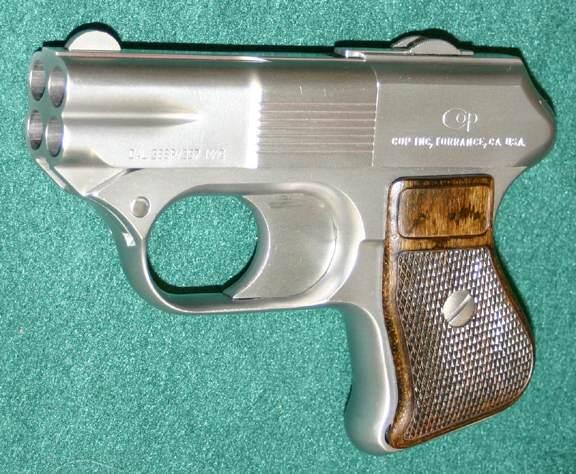 which Solo carries early in the film. The other was an updated UNCLE Special.........  The new weapon was a Heckler & Koch P-7 pistol, with a laser sight, a barrel extension and silencer, extended magazine, and a forearm stabilizer. The weapon is barely seen in the film, used only when Solo infiltrates THRUSH HQ, near the Hoover Dam. He quickly loses it and it doesn't even get a prominent screen shot, which seems like a waste of a good prop. The film was meant as a potential pilot for a revived series; but, it ended up a one off and it was back to retirement for Solo & Kuryakin. In 1993, the film rights to the series were picked up and several scripts developed, over a 20 year period. Director Steven Soderbergh was attached, at one point and george Clooney was set to star; but, Clooney had to bow out, due to a recurring back issue. Soderbergh left the project and other directors came and went. Finally, Guy Ritchie was hired and a new Man From UNCLE film was released, in 2015, starring Henry Cavill as Solo and Armie Hammer as Kuryakin. This is set squarely in the 60s, during the Cold War, with Solo and Kuryakin on opposite sides. They run into an operation by Nazi sympathizers to provide a nuclear weapon to the fascists. Solo and Kuryakin must work together to stop them. They are aided by Alexander Waverly, of MI-6. At the end of the film, they are recruited into a new organization that Waverly is heading up, the United Network Command for Law and Enforcement. The film even features an action scene, where Kuryakin and members of the Special Boat Service infiltrate the villains' operation, where Illya has a version of the UNCLE Special... 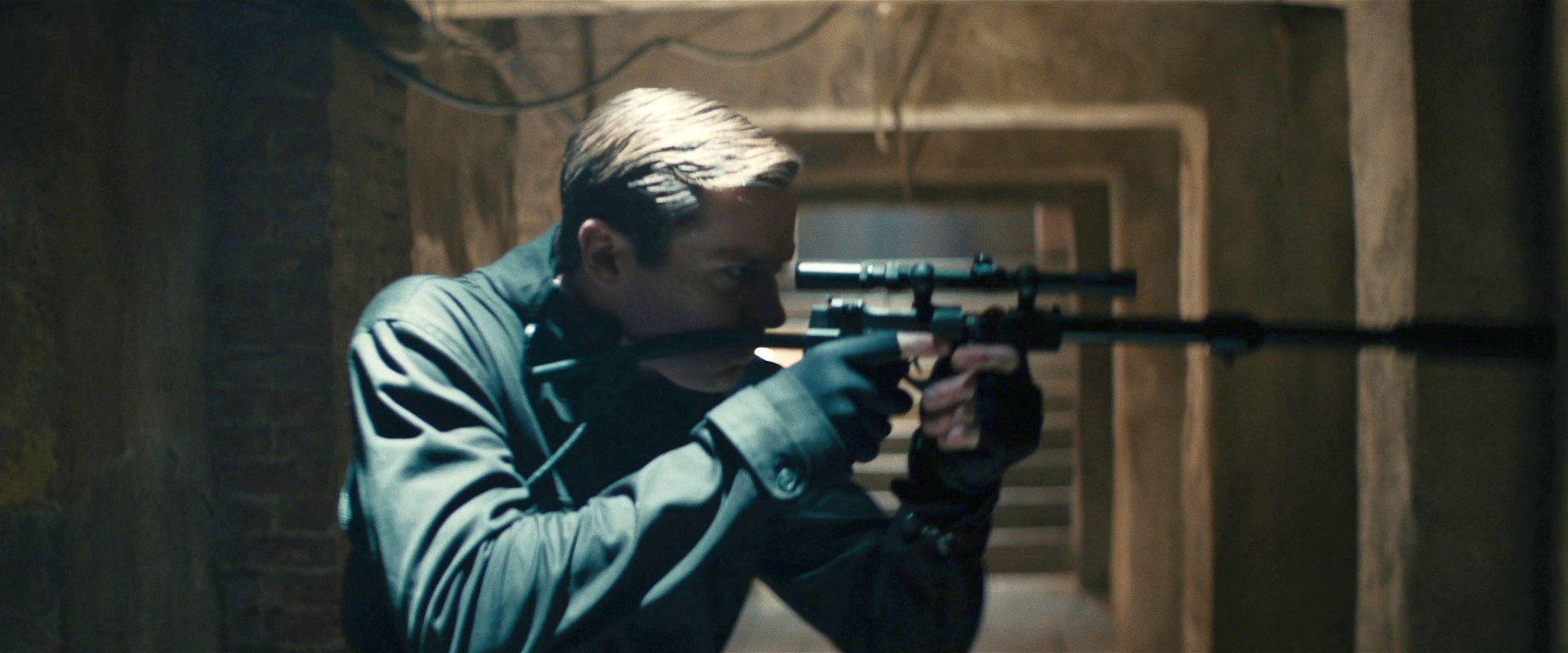 The film was a lot of fun and captures the spirit of the tv series and was vastly more entertaining than the modern Bond films. By maintaining the period feel, the could keep the lighter fantasy world, while still making it exciting. Sadly, the general public didn't know a good film when they saw it (and it is very good, in my opinion) and it was a modest hit, on a very high budget, killing chances of sequels. I'd rather have more UNCLE than more modern Bond any day. Next, another American tv spy classic: I-Spy. See what happens when a stand-up comic teams up with a serious actor, with the help of Sheldon Leonard ("Out you pixies go, tru the door or tru the window!") |
|
|
|
Post by berkley on Sept 22, 2019 22:59:29 GMT -5
I was a big Man from UNCLE fan as a kid, as were a lot of people at that age, f course. I'm pretty sure I had one or some of the less elaborate toys, though I can't remember what, specifically after all this time. I know I read the Big Little Book (not a favourite, curiously). Haven't seen the recent movie.
The Prisoner I never saw until it was re-run on CBC tv in the mid to late 70s. I definitely side with the consensus that it's one of the greatest tv series of all time and of any genre.
The Avengers too I didn't watch in depth until much later - the early or mid-90s, in fact, when I saw the entire run of the Diana Rigg era - though in this case I do remember it being on when I was a very small kid in the 60s, but I believe it might have been shown in a time slot past my bedtime, because the main thing I recall is our mother telling us kids about it, for some reason. I've never liked Uma Thurman so I've avoided the movie.
|
|
|
|
Post by brutalis on Sept 23, 2019 7:43:51 GMT -5
Boy is this thread reviving my teenage years. Spies and their bikini clad ladies ruled the television stations with their movies and shows along side my beloved westerns. The 70's was a spectacular time of repeats running every day after school and weekends.
|
|
|
|
Post by thwhtguardian on Sept 23, 2019 7:46:25 GMT -5
I loved the modern Man from Uncle film, I was definitely disappointed that it didn't do better.
|
|
|
|
Post by Deleted on Sept 23, 2019 9:18:24 GMT -5
I loved the modern Man from Uncle film, I was definitely disappointed that it didn't do better. Same here.  |
|
|
|
Post by codystarbuck on Sept 23, 2019 23:31:16 GMT -5
So, what was the most groundbreaking spy series of the 60s? Was it The Man From UNCLE, for pairing an American and a Russian, for the same organization? Was it The Avengers, for pairing a man and a capable woman, who were equals? Was it Secret Squirrel, for having a tail? Some would say it was I-Spy, for presenting a black man and a white man as equal capable partners, with little commentary about race. I-Spy was the creation of writer David Friedkin and Morton Fine, and cinematographer Fouad Said, who formed Triple F Productions. Executive producer was actor/producer Sheldon Leonard (Nick the Bartender, in It's a Wonderful Life and producer of the Andy Griffith Show, The Dick Van Dyke Show, and Make Room For Daddy). Leonard was the guy who sounded like a gangster, yet used the vocabulary of a Harvard professor, which made for entertaining interviews (and him often playing gangster characters). Sheldon leonard had seen Bill Cosby in a nightclub and had the idea of casting him with Robert Culp, making him the first black lead actor in a network comedy series. They didn't want race to be an issue and it is rarely commented upon, in the series. Cosby and Culp are presented as equal partners, each with their own specialties. The series features Culp as Kelly Robinson and Cosby as Alexander Scott. Robinson poses as an amateur tennis ace, with Scott as his coach, traveling the world playing other players, while carrying out their missions. Robinson is the more experienced agent and an athlete, while Scott is a Rhodes Scholar and speaks multiple languages. 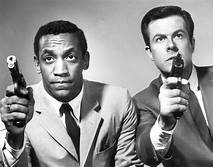 One element of the series that set it apart from other network spy shows, like The Man From UNCLE and Mission: Impossible was that it actually shot footage in locations around the world. the others were shot entirely on the MGM and Desilu backlots, plus areas in Southern California. I-Spy actually travelled to other countries and shot footage; not just scenic shots to be replayed, but with the actors woking in the locale. Fr instance, the first episode, "So Long Patrick Henry," is set in Hong Kong and we see the harbor, see restaurants and nightclubs, as well as hotel exteriors, then see Kelly and Scotty on the run from some Chinese assassins, working for the Communist government. The race up the hillsides in Hong Kong, around the shantytowns built into the hillside. They take out their pursuers, while the residents watch, thinking a movie is being filmed (in a meta moment). In each season, they chose 4 or 5 locations and wrote stories set in those areas, to use the features in the series. Thus, several episodes in season 1 take place in Hong Kong. The series featured a mix of action, drama and humor, with the real attraction being the banter between Culp and Cosby. They became fast friends during filming and it informed the characters and they playfully poked fun at each other. Culp also wrote 7 episodes and directed one of his scripts. Cosby's Scott was said to be a Temple univ. graduate and Cosby wore his own Temple sweatshirt in the series. References were made to growing up in Philadelphia and Scott even says he is Fat Albert when put under a drug for interrogation. The series lasted 3 seasons and was very popular, spawning merchandise, including spy toys, tie-in novels, and comic books from Western/Gold Key (who had also done both the Man and Girl From UNCLE). Most of the novels were written by Walter Wager, under the name John Tiger. Wager also wrote the novels that formed the basis for the movies Telefon and Die Hard 2. He would also write tie-in novels for Mission: Impossible. Reunion fever was strong in the 80s and 90s and, like TMFU, I-Spy had a film, with Culp and Cosby back in harness. It was a potential for a new series; but, like UNCLE, it ended up just being the movie. And again, because Hollywood has no new ideas, I Spy was turned into a feature film, with Eddie Murphy and Owen Wilson. Um............yeah......... For a twist (and a weak one) they reversed the names and made Kelly Robinson (Murphy) a boxer. It was played purely for comedy and failed miserably. It was the third bomb in a row, for Murphy and Wilson had no business anywhere near a spy film, comedy or otherwise. Murphy may have idolized Cosby; but, Bill played the role better and Wilson was no Robert Culp. Culp could go from playful to deadly in the same scene. I missed the series, originally (too young, when it was on network tv and it was never syndicated, in my neck of the woods). Episodes are available on Youtube, and I have just started it, and have enjoyed it, so far. I wasn't sure how I would do, with Cosby. I tried watching the Cosby Show again and couldn't get past Cosby's past history. With I Spy, so far, it hasn't been as bad. I think part of it is the equal emphasis on Cosby and Culp and their chemistry, vs the persona of the moral Cliff Huxtable and the reality of Cosby's interactions with his multiple accusers (and admissions in court). So far, I have been able to enjoy I Spy, for what it is. This is something more on par with the ITV series, like The Saint or The Avengers, with a mixture of action and humor, but well balanced. Plus, unlike those shows, where stock footage set the locale, but scenes were shot in UK studios, I Spy is obviously in the real environment. Next, one of the longest running American spy series, which spawned a film franchise that went beyond one film, whether it should have or not (you be the judge). Your mission, should you choose to accept it, it to dive into the world of the IMF. As always, if you or any of your team are captured or killed, the secretary will disavow any knowledge of a Mission: Impossible revival series. |
|
|
|
Post by Deleted on Sept 24, 2019 1:21:56 GMT -5
I didn't watch much (in syndication) of I Spy and it's never, ever appeal to me; my three older brothers loved it and they all like Robert Culp and Bill Crosby. My parents watch it too; but they like Culp better than Cosby. I wasn't allowed to watched it because it was on at 10 o'clock at night. It was past my bedtime ... anyway, it didn't appealed to me when I got older because I did not take Cosby as a serious actor because I associated Cosby as a comedian.
|
|
|
|
Post by berkley on Sept 24, 2019 1:32:37 GMT -5
Forgot to say earlier that I loved the Flint movies, seeing them on tv as a kid, and got a great kick out of the Matt Helm movies too.
I don't think I ever saw I Spy during its original run, that I remember, but have always recalled the intro to Mission Impossible pretty clearly and the white-haired guy, so I think I must have seen at least bits of that one.
|
|
|
|
Post by Deleted on Sept 24, 2019 10:14:27 GMT -5
In the return of the Man from Uncle back in 1983 ... George Lazenby had a Cameo as James Bond ... that year we had Roger Moore in Octopussy, Sean Connery in Never Say Never Again ... and this clip too.
|
|
|
|
Post by codystarbuck on Sept 25, 2019 1:06:34 GMT -5
So, in the mid-60s, spy series and films were popping up everywhere. Some were detective series in espionage drag, some were cop shows in the same, some were just copies of Bond; but, what if you built your spy series around the structure of a caper film? That idea led to one of the longest running spy series...... Mission: Impossible was the brainchild of Bruce Geller, a writer for some DuMont Network shows and several westerns, including Have Gun, Will Travel, The Rebel, The Rifleman, and Rawhide. He conceived of MI while working on Rawhide. he had been inspired by caper films, like Topkapi and Rafifi... Those films, and others like them, involved intricate plots to steal something valuable from a seemingly impregnable place. Mix that with con games and you have Mission: Impossible. The first season is primarily espionage oriented, with the MI team taking on dictators, counter-espionage figureheads, spy schools and similar things. The pilot has them infiltrate a Latin dictatorship, infiltrate a vault, impersonate the dictator, and escape across the border, with the enemy hot on their tails. Many episodes involved breaking into vaults and secure locations to plant something or remove it, plus elaborate disguises to impersonate others. Steven Hill was the original star, playing Dan Briggs. Briggs was a more dynamic leader, more likely to be in the thick of things and more likely to play dirty with a target. Hill was a stage-trained actor and had appeared on Broadway and he adds a depth to the thinly sketched Briggs, which makes him the center of that first season. A close second was Martin Landau, ad Rollin Hand, a magician and make-up artist, who specialized in impersonating targets with lifelike masks and disguises, which he could peel off. Barbara Bain was Cinnamon Carter, a model and femme fatale, who often found herself the bait in a honey trap. Greg Morris was Barney Collier, the expert in electronics, machinery and anything mechanical. Barney often had the dirty job, crawling around in air ducts and service tunnels to deactivate alarms or drill into vaults, often sweating off what looked like 20 pounds per episode. Peter Lupus was Willy Armitage, weightlifter and circus strongman, who was there to provide muscle.  The premise was that Dan Briggs would receive his orders, then choose a specialized team for the mission. There were occasional guest team members (Wally Cox, in the pilot, Mary Ann Mobley, in a later episode, involving a prison break and a circus cover). However, he always seemed to center on Rolly, Cinamon, Barney, and Willy. The first season established the formula, as Briggs gets his orders via tape recording (in different places, though not as varied as in later seasons), then he would be in his apartment, selecting his team. A briefing followed, the early set up at the target locale, the technical side unfolds, complications arise, and they have to work fast to get out or achieve their goal, in quick time. Sometimes they conned their target into revealing information, disgracing themselves, or in giving away some secret. In others, they had to steal something (nukes, jewelry/gold, secret plans, etc). In some, they are trying to help someone escape. Trouble began brewing in that first season. Hill was an Orthodox Jew and refused to work on the Sabbath, making him unavailable from 4:00 pm Friday through sundown, on Saturday. Episodes had to be filmed around him. That was covered contractually; but, other problems arose. Hill began to balk at some of the physical demands on him and even stormed off a set and ocked himself in his dressing room, requiring most of an episode to be shot without him, with Cinnamon receiving the mission profile. It also led to more appearances by martin Landau. Landau was a special guest, for the pilot, , with a deal to do maybe 4 or 5 more episodes. As Hill's time became a problem, more demands were put on Landau to appear in episodes. He brokered a deal to cover more episodes, but as a special guest, which gave him a contractual out if a film offer came along. By the season's end, the show parted ways with Steven Hilland Martin Landau was contracted as a series regular. The second season features an Briggs' replacement, Jim Phelps, played by Peter Graves. Graves was a more reserved performer than Hill, stilted even. He was never a particularly great actor; but, could be a good actor, with the right material (Stalag 17, for example). He became the series lynchpin, remaining until the end and in the later revival. His role was a bit less dynamic than Hill's, though he did go undercover, from time to time. Episodes still revolved heavily around Rolly's disguise work and Barney's technical operations, with Willy usually aiding Barney, and Cinnamon and Jim aiding Rolly. As the series progressed under Graves, the plots began to move away from Cold War espionage (though not heavily, until the end of the 60s) and into domestic crime, as they IMF agents took on "the syndicate." It was a gradual progression, as espionage was a heavy feature, then it became more split, then more domestic, by the 70s. 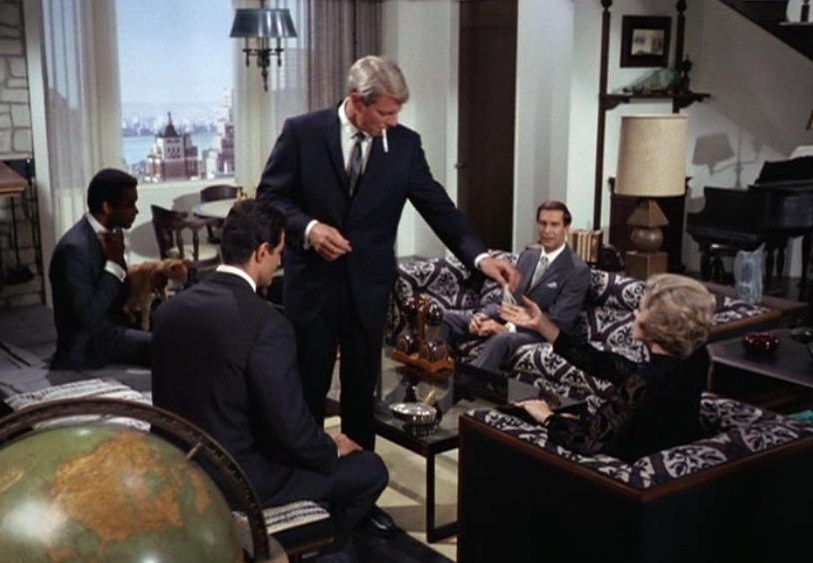 All good things must come to an end and further cast changes would occur. Landau and wife Barbara Baines left after 3 seasons and Landau was replaced by Leonard Nimoy, as the magician The Great Paris. he, too, was a master of disguise, probably because they had scripts intended for Landau. Baines was replaced by a series of guest stars, with only Lee Meriwether appearing in more than one episode.  Nimoy stuck around through the 5th season. Season 5 also saw the additions of Sam Elliot, as Dr Doug Robert, and Lesley Ann Warren, as Dana Lambert. Seasons 6 and 7 saw Lynda Day George join as Lisa asey, though maternity leave interrupted her tenure, where she was replaced by Barbara Anderson, as Mimi Davis. The later years saw more crime-themed plots, including a con to convince a criminal that he has been cryogenically frozen and awakened in the future, where the statute of limitations had worn off, so he can lead the IMF team to the loot. The move away from foreign missions was in part due to the Paramount buyout of Desilu (who produced the series), as they exercised more control over the series, cutting foreign missions due to the expense of sets and locations. the domestic ones allowed more generic sets and the use of locations around Los Angeles and its environs. Guest stars were a regular feature, both on the IMF side and as the targets. Since filming was on the desilu lot, there was quite a crossover with other Desilu shows and actors. George Takei played an IMF agent, in season 1. Pernell Roberts was a Third World dictator, in one episode (and appeared as other characters, in 3 more). Fritz Weaver appeared in 4 different episodes, in 4 seasons. others included Claude Akins, Richard Anderson, Michael Ansara, Barry Atwater (5 episodes), Johnny Bench, Lloyd Bochner (3 episodes), Eric Braeden (2 eps), Joan Collins, Robert Conrad (a 2-prt ep and 2 others), Sid Haig (8 eps), Kim Hunter, Eartha Kitt, Fernando Lamas, Mark Lenard (4 eps), Roddy McDowell, David Opatoshu (3 eps), William Shatner (2), Martin Sheen, Gregory Sierra (3), Cicely Tyson, Vic Tayback (2 eps), Jessica Walter, and Anthony Zerbe (5). I first saw the series in the early 70s, on prime time and in syndication, on the weekends (and later, weekdays); so, I knew Peter Graves as Jim Phelps, until I saw the first season episodes, in syndication. For my money, the best episodes are in the first 3 years, with Landau, Baines, Morris and Lupus as the nucleus. I prefer Steven Hill to Peter Graves; but, Graves is fine in later eps. Nimoy was good in his two seasons, then quality varies quite a bit, depending on the story. Watching several episodes in succession lays bare the formula and the sameness of plots and scenes. As the years drag on, creativity goes downhill. Still, they could usually pull a decent con on some hood. The series left the air in 1973; but, like many 60s shows, came back for the 80s. This time, rather than a reunion, we got a new series, with a new generation of IMF agents, including Barney's son (played by Phil Morris, son of Greg). It wasn't for lack of trying, as reunion movies had been planned for 980, and 83/84, before giving up on the idea. In 1988, we got the new series, with Peter Graves back in action, and Phil Morris, Thaao Penglis, Tony Hamilton, Terry Markwell, Jane Badler and Bob Johnson. Greg Morrison made a couple of appearances as Barney and Lynda Day George appeared as Lisa Casey. The series was shot in Australia, for a much cheaper bargain than the US, which is why it returned for a second season, despite lower ratings than most returning series. It was cheap enough to justify, so it continued and most viewers tuned into somethig else. That would be it for the IMF team, though the series formula spawned imitators, including the 80s series Masquerade, with Rod Taylor. However, it's real influence would come in the 90s, as the inevitable film, based on an old franchise was conceived and released. The IMF team is taken down in a series of incidents, leaving only undercover man, Ethan Hunt (Tom Cruise) alive and disavowed. He goes hunting for whoever set them up, with a list of IMF agents as the McGuffin. It was big on double-crosses, action scenes, CGI and practical stunts that defy the laws of physics (Hunt escapes from an exploding helicopter, in the Channel Tunnel and is thrust forward with enough velocity to land on the train, that is moving away from him). Technology was even more outlandish than the original series and agents were killed left and right. To longtime fans, the deaths of imposters, as the original characters, was more than a bit of a slap in the face, as was one of the plot twists. To many, including me, it was a middle finger to fans, to sever any ties to the past. better to have just used the name and format and make no reference to the original agents and go forward, as it served the same purpose. The premiere had an infamous MTV moment, when Kennedy (a blithering idiot under the best of circumstances) asked Martin Landau (an Oscar winner, by this point) why he is there and he proceeds to school her about doing her research ad that he had co-starred in the original. Mission Impossible did well at the box office, even if longtime fans were mixed about it, as were critics. Sequels followed, with a total of 6 films to date, making it the third longest spy franchise, after James Bond and the French OSS 117 series (7 films from 1956-1970, one tv movie and two with Jean Dujardin, as a spy spoof), or 4th, if you count the 8 Man From UNCLE compilation films. I'm ambivalent to these things, as they are not the Mission: Impossible of my youth and are just big budget action films that don't really pull me in. I confess to only watching the first, wishing I had my ticket price back, and skipping the rest, based on the same old stuff in every trailer. cruise does many of his wn stunts (and plenty he shouldn't); but, whatever. The series has its fans and more power to them. I'll stick with the originals, thank you. Besides, Cinnamon Carter has it all over any female IMF agent seen in the films.... 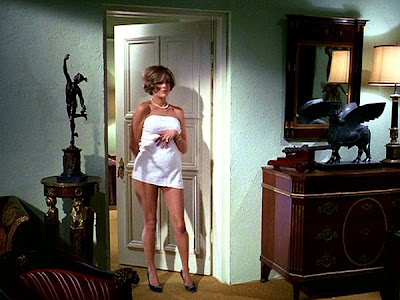 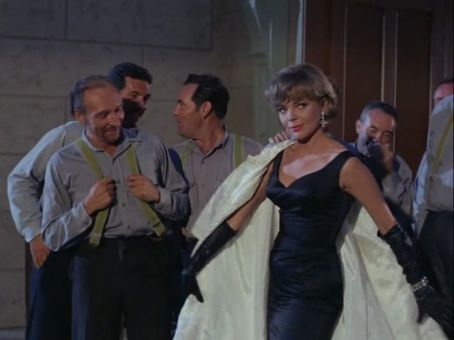 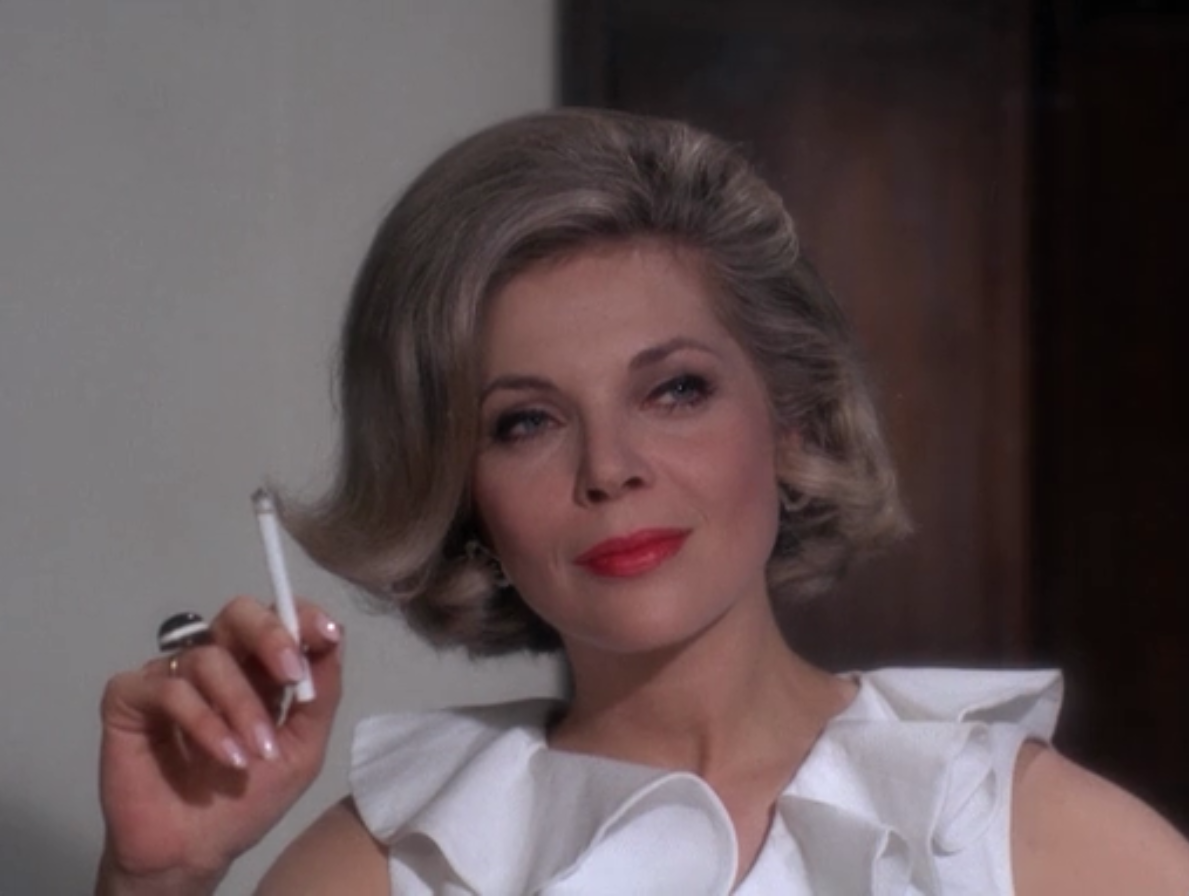 Besides, they had a cat as an IMF agent, which is my cat, Derek's favorite episode....  Two paws up! Next time, we go back in time to the granddaddy of all secret agents (chronologically), as we meet Jim West and Artemus Gordon, as they work to tame The Wild Wild West! |
|
|
|
Post by codystarbuck on Sept 25, 2019 18:26:30 GMT -5
Forgot to add, Mission: Impossible had probably the best theme song of any spy series, and one of the best in television. It was composed by Lalo Schifrin, with a nice, energetic jazzy style that pops at the begiining and just pounds excitement through to the end. It would be used throughout the series to signify the mission end and versions would be added for tension.
Adam Clayton and Larry Mullen jr did an updated version for the film franchise, which was decent, though I think they should have just used the version from Laika & the Cosmonauts....
|
|
|
|
Post by codystarbuck on Sept 26, 2019 14:33:52 GMT -5
So, it's the late 1800s. The Civil War has been over for a while and you have headed west to seek your fortune. You stroll into, say, San Francisco and some madman has a bomb that will wipe out the city, unless the US government returns the state of California to his family. Who do you contact? Well, head to the local telegraph office and send a cable to Jim West, C/O The US Secret Service and watch for a private train to roll into town. This was the premise to the most unique spy series of the 60s..... The Wild, Wild West premiered in 1965 and featured Robert Conrad as James West and Ross Martin as Artemus Gordon. They are roving agents of the US Secret Service, tasked by Pres. Ulysses S Grant to keep the peace and deal with strange phenomena and characters too tough for law enforcement. They travel on their private train, which is tricked out with all kinds of gadgets and comforts (including a butler), as well as on horseback. Jim is the action man, planner, deadly pistolero, and suave ladies man. Artemus is the scientific brains, master of disguise, and support man. Together, they face everything from fake flying saucers to shrinking formulas and everything in between.    The series was the creation of Michael Garrison, who saw that the ubiquitous western tv show was being replaced by spy series. So, he created a mixture, a spy series set in the 1870s, with plenty of Jules Verne futurism to provide the gadgets and mcguffins, plenty of gunplay, some romance, and liberal doses of witty humor (and character bits). The series nearly starred Rory Calhoun; but, when he bowed out and others proved unsuitable, Conrad was tapped. Conrad had starred in the detective series, Hawaiian Eye, for four seasons; but, he didn't exactly fit the Western hero profile, standing 5 ft 8 in (and that may be stretching the truth an inch); but, he had been an amateur boxer and was tough as nails and leading man handsome. In screen tests, he was given Alan Ladd's boots (with lifts) to make him look taller. The costumer hit upon a solution by outfitting Conrad in Mexican riding clothes, with longer lines, short jackets, to make him appear taller. The rest was down to camera angles. Conrad played West as a supremely confident agent, with a wry sense of humor and an eye for a pretty woman. He could also look deadly in a single scowl and was fit and experienced enough to do his own stunts. This caused a few problems when he dove off a balcony, missed a chandelier and fell 12 feet, on his head. And you thought Jackie Chan invented this stuff.... Ross Martin was stage trained and was more of a character actor. The series played to these strengths by making Artemus a master of disguise, Allowing Martin to play different characters in episodes. 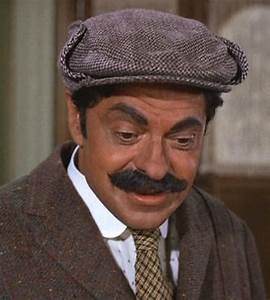   Feeling left out, Martin also tried his hand at the occasional stunt, resulting in a few injuries. he suffered a broken leg when he dropped a rifle, stepped on it and rolled his foot. They tried to finish the scene with his stand-in, who was hit in the eye with an ejected blank cartridge and burnt. The scene was scrapped. In the 4th season, martin suffered a heart attack and was absent for several episodes, temporarily replaced by Charles Aidman, Alan Hale Jr (Skipppppeerrrrr.......) and William Schallert (Patty Duke's tv father). The series became noted for it's ingenious gadgets, such as the boot tip knife, the sleeve gun, and various inventions of Artemus.  The private train was a gadget unto itself, with sleeping quarters, a parlor/office and weapons hidden throughout. A pull down tray revealed Jim West's weapons,including sleeve gun, sidearms, carbine, throwing knives (hidden in the back of his jacket, hilt below the collar) and breakdown Derringer, hidden in hollowed out bootheels. The pool table had cues with sword blades hidden inside and an exploding tear gas cue ball. They had their own telegraph set up and a lab, for Artemus.  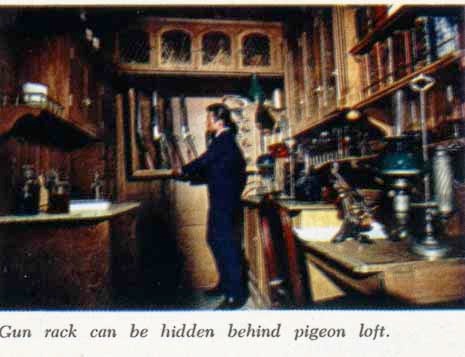 All of the is fine and dandy; but, a spy series is dependent on villains and , in that, TWWW excelled. Victor Buono appeared as a Fu Manchu rip off, in the first episode, but later played magician Count Manzeppi, in two episodes. 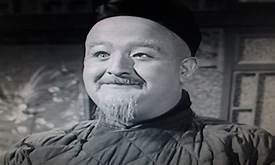 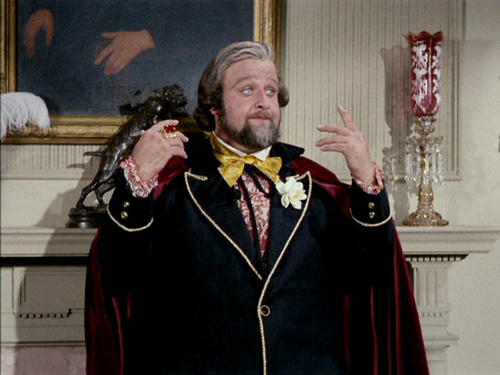 Agnes Moorehead won an Emmy for her role, as Emily Valentine.  However, the king of all of the villains was the mad genius, Dr Miguelito Loveless, played by the brilliant Michael Dunn...  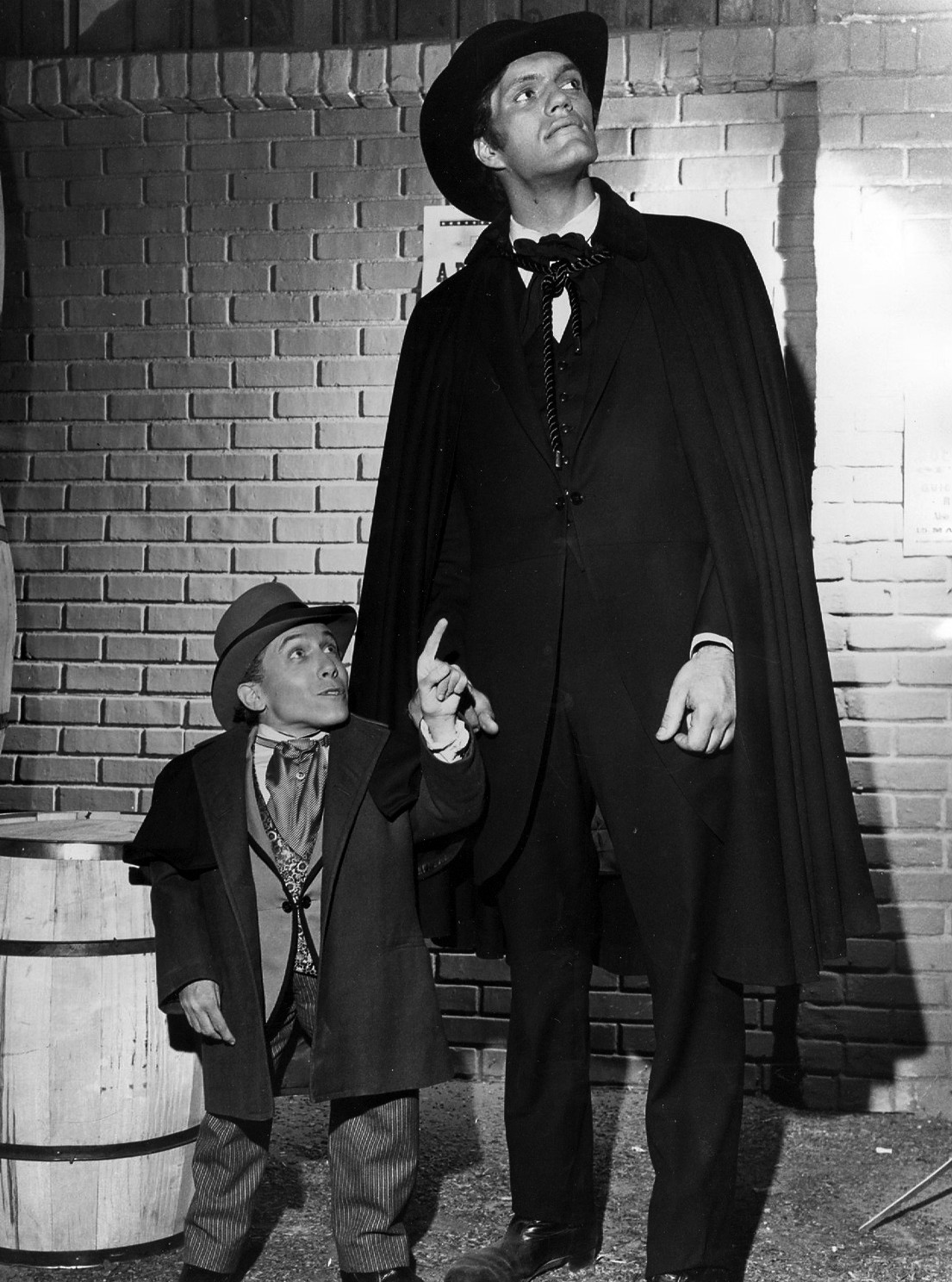 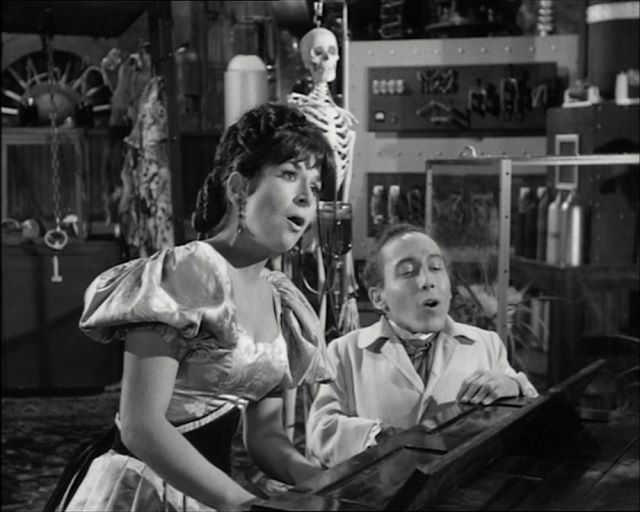 Dunn was an actor and cabaret performer, who stood 3 ft 10 in, yet had a talent that was ten feet tall. He was a brilliant actor, able to make the over-the-top Loveless, well, loveable, almost sympathetic. He could be charming, deadly, petulant, impish, evil, maniacal and even romantic. Early on, he was paired with 7 ft+ actor Richard Kiel (Jaws, in the Bond films) as Voltaire, his henchman. The contrast made for a striking visual, though I'm sure it was a technical nightmare to film. Also frequently accompanying Loveless was Antoinette, a seemingly trapped woman who adored her genius, played by Dunn's singing partner Phoebe Dorin. The duo were often allowed to demonstrate their talents with singing scenes, which endeared Dunn to the audience, even more. Dr Loveless first appears in "The Night the Wizard Shook The Earth," where he has a super- explosive and is demanding the return of California to his family. He is defeated by West and Gordon and vows revenge. Every appearance is another wild scheme and a chance to destroy Jim West. He appears in a total of 10 episodes, across the 4 seasons of the show. He creates Janus, a duplicate of Jim West, uses exploding toys, uses drugs to make Jim think he has shot Artie, shrinks Jim and Artie to the size of dolls, develops a chemical that kills plant life (while he parades around as Robin Hood), develops a machine that can transport people into paintings, runs a training school for criminals, fakes his own death, and kidnaps a group of people who have wronged him (his final episode, with Charles Aidman substituting for Martin. The stunt team on the show were regulars and often turned up as henchmen and similar thugs and could usually be spotted, quickly. One of these was Red West, actor and stuntman, as well as best friend of Elvis Presley (Red was the one who defended him in high school). He and Conrad became fast friends and West was added to the second season of Baa baa Black Sheep and turned up in other Conrad tv series. The stuntmen and Conrad used to play football, dring breaks, which were known for being very rough, resulting in a few injuries. After Conrad's injury, the network insisted on stunt doubles for risky stunts. One of the favorite visual elements of the series was the opening animated titles. Above is the first seasons version. in the second season, it was done in color, with an alteration... The animation was done by DePatie-Freleng (creators of the Pink Panther and animators of the title sequences of those films) and the style would be copied for the 1966 Lone Ranger animated series, on CBS, which also borrowed the Verne influence with plots. The other feature of the title sequence is that it would be used for act breaks. At the end of each act, the screen freezes on a single image (usually a person) and it fades into a line drawing of that scene, in one of the four corner panels of the graphic. Each corner would be filled up at each act break, with the ending filling the final corner. It gave a mini recap of the episode. 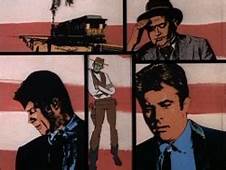 The series went through immense turmoil, in its first season, as producers came in went, as there was a power struggle between CBS and Michael Garrison. Garrison had never produced for television and had problems with budgets. ben Brady had been producer, then was replaced by Collier Young, who immediately came in conflict with the actors and writers. He added the second "Wild" to the title, and a butler named Tennyson, but was out after 3 episodes (as was the butler). He was replaced by Fred Freiberger, who steered things back to the original concept, then was fired after 10 episodes, as was Garrison (who still owned a 40% stake in the show). garrison turned it over to his lawyers. Phillip Leacok and John Mantley were brought in, before Mantley returned to Gunsmoke and was replaced by Gene L Coon. Coon left to film First to Fight (with Chad Everitt, based on the exploits of Medal of Honor winner John Basilone). Garrison returned and stayed until the beginning of the second season. Then, fate struck and Garrison fell down a stairwell, in his home, fractured his skull and died. The cast and crew were stunned. CBS exec Bruce Lansbury (brother of Angela) was brought in to produce and remained until the end. The series remained popular through its entire run. the first season was shot in black & white and maintains a generally serious tone. Seasons -4 were shot in color, and stories became campier, though it varied from episode to episode. In the end, it wasn't ratings that killed the show, but demands about reducing violence on television, in the wake of the assassinations of Dr Martin Luther King and Robert Kennedy. CBS was called on the carpet by congressmen in two different sessions and pressure was on to ax anything violent and The Wild, Wild West was named specifically. It was cancelled in 1969, as a sacrifice to censorship. CBS re-ran a block of episodes, in the summer of 1970, as a replacement for the carol Burnett Show, to high ratings. They then put it into syndication, where it proved hugely popular. Watchdog groups threw a fit and one, The Foundation to Improve television, sued to block it in Washington DC, claiming it was unsuitable for children and would be broadcast in the late afternoons. the station rebutted that they were counter-programming against 3 other stations providing children's programming and were not tryi to draw a young audience. Judge John Sirica, of future Watergate fame, dismissed the suit and referred FIT to the FCC. They tried to appeal and lost. Other groups were more successful in blocking shows like TWWW, I Spy, and The Man From UNCLE in Los Angeles. However, TWWW was broadcast throughout the 70s on local stations and on cable, in the 80s. Turner Broadcasting added it to the TNT network, in 1994, with heavy promotion. It is still seen on cable and is available on home video. The continued popularity in syndication led to two reunion films, in the 80s. The first, The Wild Wild West Revisited, reunited West and Gordon, as the deal with a plot from Dr Miguelito Loveless Jr, played by Paul Williams. Aiding him were robots, portrayed by mime duo Shields & Yarnell. The result was overly campy; but, the leads handled it well and it was nice to see them together, again. The film did well enough for a second, More Wild, Wild West, with Jonathan Winters as villain Albert Paradine II. it was supposed to be a Loveless Jr rematch; but, plans were changed, leading to an opening where various clones are killed. Again, the tone was campy. Robert Conrad revealed that plans were to do a new film every year; but, actor Ross Martin died in 1981, after suffering another heart attack, while playing tennis. Since then, Robert Conrad provided commentary for episodes of the series, on dvd. There was talk of a theatrical film, for years;. In 1992, Warner Bros optioned the property for a film, to be directed by Richard Donner, from a script by Shane Black. The film was to star Mel Gibson, as West. Donner had directed three episodes of the tv series. However, it did not come off and the group worked on Maverick, instead. Producer Jon Peters, of the Batman and Superman franchises took over and, eventually Barry Sonnenfeld was hired to direct. Will Smith was hired to play West, despite the historical period, and Kevin Kline played Artemus Gordon. Kenneth Branagh played a racist Dr Loveless, who rather than being a dwarf genius was a crippled madman, in a steam-powered wheelchair. The film was filled with racist diatribes aimed at West and much bad comedy. The climax features a giant mechanical spider vehicle, which, as kevin Smith detailed, Peters had been trying to insert into films, including the aborted Superman remake (see An Evening with Kevin Smith). Against my better judgement, I went to see it, with friends, and hated it with a passion. I would have walked out, but, I had provided the transportation. It was unfunny, offensive, and lacking any connection to the original. The effects were artificial and the plot ridiculous. The film cost $170 milion to make and only grossed $130 million, domestically. It made another $100 million overseas; but was seen as a massive disappointment, killing (a mercy killing) any chance of sequels. Robert Conrad turned down an offer to play Pres Grant and heavily criticized the production and was deeply offended by it, citing the legless Loveless played by branagh, rather than a Little Person actor as Loveless, the racism, the campy tone, and the miniscule plot. It was awarded multiple Golden Raspberry awards and Conrad gleefully accepted them on behalf of the film. Smith later apologized to Conrad, in an interview with Total Film magazine, for how badly the film adapted the original, saying he now understands how deeply Conrad felt about the original, citing his own connection to The Fresh Prince. Western/Gold Key published 7 issues of a comic book, during the series run, with the standard photo covers.  In 1990, Millennium optioned the rights and put out a 4 issue mini-series, with Dr Loveless back to spar with West & Gordon, in an excellent story that captured the flavor of the series...  There was plenty of merchandising for the series, including action figures, toy sleeve guns and lunchboxes.    The best item, for collectors or fans (aside from actual props) is the book by Susan Kesler...  It is filled with in depth articles about the creation, filming, and impact of the show, with interviews with actors and crew, tons of still photos, complete episode guides and material about the two reunion specials. it also covers merchandise and fandom. I got my copy at the Atlanta Fantasy Fair, one of the first items I purchased, upon seeing it. if you ever had a question about the series, you will find the answer there. Next time, we head to Europe, as we see how European studios jumped on the Bond craze. We will start with the Kommissar x films, from Italy, starring Tony Kendall (Luciano Stella) and Brad Harris (an American actor & stuntman). |
|



